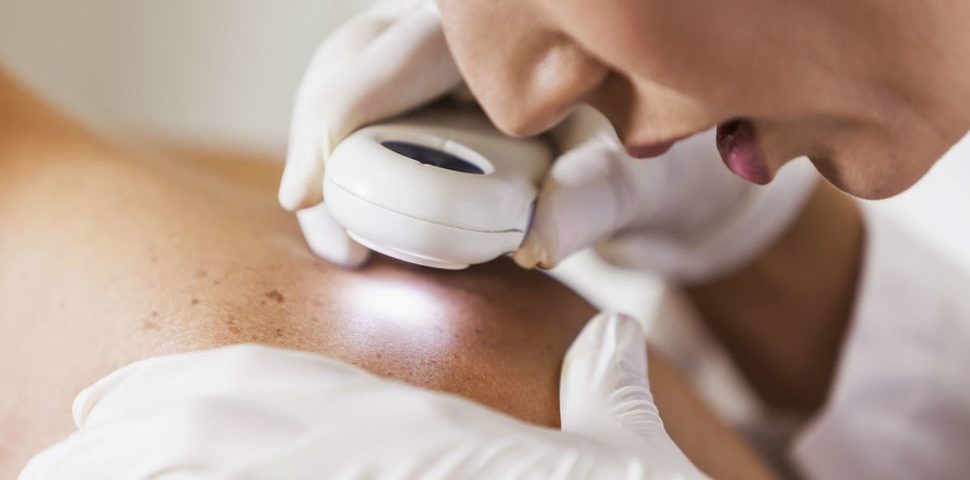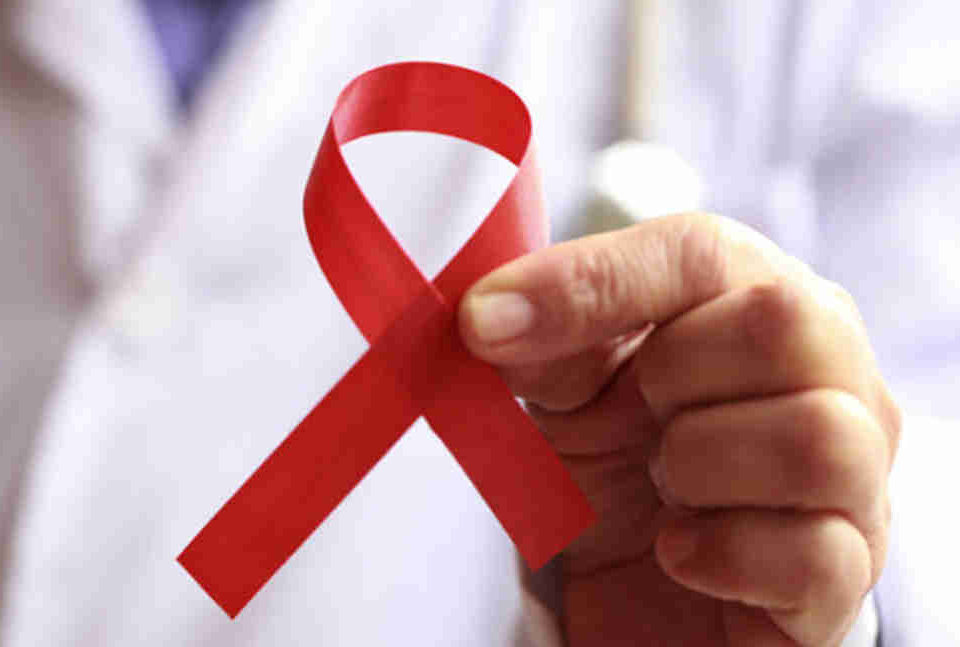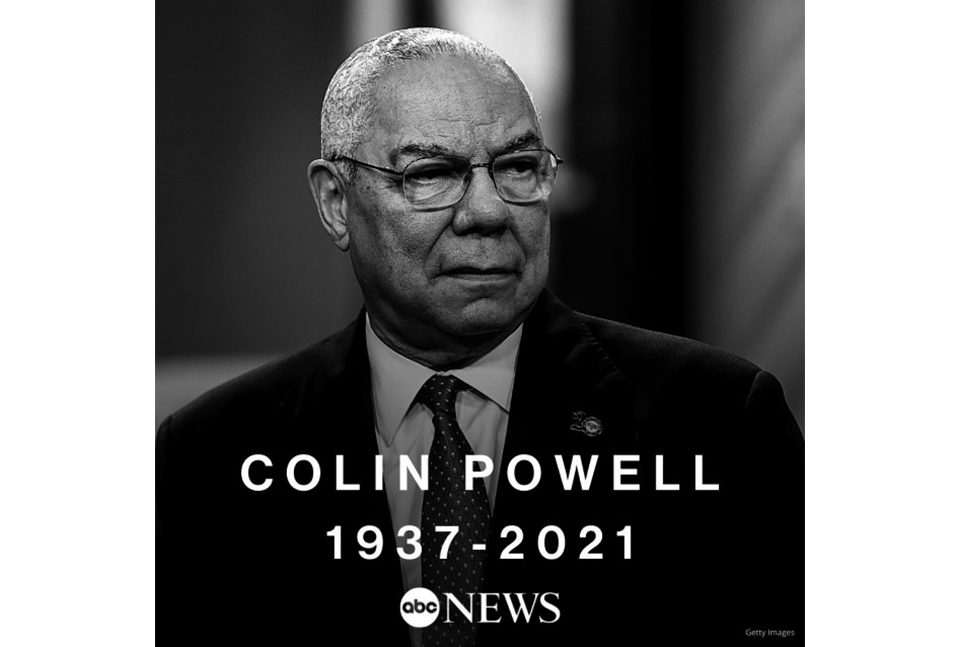- 如有疑问,请联系电邮
- customer@ihealth66.com
USNEWS:7种预防皮肤癌的方法

USNEWS:糖尿病失控和胰腺癌之间有联系吗?
2019年3月19日
USNEWS:结肠癌的早期征兆
2019年3月21日By Elaine K. Howley and Samantha Costa
人类的皮肤细胞很多,而这些细胞中的每一个都有可能在我们生命的某个时刻癌变。因此,皮肤癌在美国是最常见的癌症,这可能并不奇怪。根据美国皮肤病学会(American Academy of Dermatology)的数据,每5个美国人中就有1人患有黑色素瘤,今年将有300多万例非黑色素瘤皮肤癌被确诊。由于欧美人相对更易罹患皮肤癌,所以在皮肤癌方面的相关研究也更多更深入,所以本文极适合中国的潜在患者的注意。
非黑色素瘤皮肤癌可根据其发生部位分为基底细胞癌和鳞状细胞癌两大类。这两种癌症的风险都相对较低,尤其是在适当治疗的情况下。“基底细胞癌是最常见的皮肤癌类型,占大约80%的所有皮肤癌,”马克博士说。鳞状细胞癌,在美国确诊的皮肤癌中占近20%,往往比基底细胞癌更具侵袭性,但也通常对切除反应良好。
黑色素瘤皮肤癌比较少见,但“黑色素瘤可能是一种更具侵袭性的皮肤癌,”马克·格拉霍费尔(Marc Glashofer)博士说。“大多数黑色素瘤都处于早期阶段,很容易通过切除来治疗。然而,如果黑色素瘤是在晚期被发现的,或者正在迅速生长,那么你就有可能面临更高的复发率和扩散到其他地方。”
以色列西奈山Beth Israel综合皮肤癌项目主任Desiree Ratner博士说,无论你患的是哪种类型的皮肤癌,“早期发现的皮肤癌通常是可以治愈的。”拉特纳说,重要的是要注意你的皮肤,这样你才能保护它。以下是七种预防皮肤癌的方法:
1. 每年做一次检查。
每年去看皮肤科医生是记录皮肤变化的好方法。这些变化是皮肤癌出现的地方,所以当它们出现时,需要进行检查。西奈山伊坎医学院(Icahn School of Medicine at Mount Sinai)皮肤学副教授安吉拉·兰姆(Angela Lamb)博士说:“对新手来说,看起来不愈合的丘疹或正常的痣实际上可能是皮肤癌。”“关键是,如果你不知道要寻找什么,皮肤癌看起来是非常无害的。”
2. 每天涂抹防晒霜,然后重新涂抹。
虽然是阴天,但这并不意味着你应该扔掉防晒霜——紫外线仍然可以穿透云层,对皮肤造成伤害。“如果是在锻炼或水中,应该每20分钟重新涂抹一次防晒霜。当紫外线指数最高时(通常是上午11时至下午2时),再涂防晒霜尤为重要。”西奈山伊坎医学院(Icahn School of Medicine at Mount Sinai)皮肤癌外科医生、皮肤科和美容外科主任胡曼·霍拉萨尼(Hooman Khorasani)说。皮肤科医生推荐一种广谱防水防晒霜,同时具有UVA和UVB保护,SPF值至少为30。
3.不要做日光浴。
你涂了防晒霜,但你还在直接把皮肤暴露在阳光下吗?追求阳光下的肤色可能会有危险的后果。“日光浴不好,因为紫外线对皮肤细胞的DNA有害。当这些细胞受损时,就会出现衰老的迹象,进而引发皮肤癌,”兰姆说。她说,在海滩上,每两到三个小时就重新涂抹一次防晒系数至少为30的广谱防水防晒霜,如果你在水中或出汗过多,就更经常地涂抹一次。“人们经常涂防晒霜,但实际上并没有远离阳光,”拉姆斯说。“坐在伞下,戴帽子是至关重要的。”
4. 避免晒黑床。
室内日光浴床的辐射有时比太阳的辐射更强。位于西奈山的伊坎西奈山医学院(Icahn Sinai School of Medicine at Mount Sinai)皮肤学和病理学助理临床教授加里戈登伯格(Gary Goldenberg)博士解释说,这可能会导致皮肤细胞突变。“一旦细胞发生变异,它们就会继续生长成恶性肿瘤。皱纹是由破坏表皮(皮肤的外层)和真皮层(皮肤的中层)造成的,”他说。“皮肤会变得很薄,有皱纹,多年的日晒会让皮肤看起来很阴沉。”
5. 穿防护服。
拉特纳说,虽然很容易把衣服脱了,但还是要穿上那些衬衫。更好的办法是,用防护服代替传统的棉纤维。她建议购买带有紫外线防护因子(UPF)的防晒服。upf50的等级意味着每50条太阳光中就有一条到达皮肤。拉特纳说:“UPF在一定程度上取决于织物的编织(编织越紧密,保护效果越好)、织物的重量和密度以及颜色。”“选择一件带有UPF标签的衣服通常意味着这件衣服既时尚又实用,面料轻薄透气。”你经常可以在长袖衬衫、裤子和宽边帽子上找到UPF标签。
俄亥俄州克利夫兰诊所(Cleveland Clinic)专门研究黑色素瘤的医学肿瘤学家宝琳·芬肯(Pauline Funchain)博士说,穿上这样的衣服可以帮助你避免皮肤癌,但也可以避免痛苦的晒伤。“防晒是预防皮肤癌的重要组成部分,因为它绝对可以防止或减少”紫外线辐射对皮肤细胞造成的伤害。
别忘了戴太阳镜——这可能有助于降低患眼黑色素瘤的几率,这是一种危险的眼癌。这种相对罕见的癌症每年影响美国约2500名成年人,虽然紫外线照射与OM之间的关系尚不清楚,但一些医生认为两者之间存在关联。据眼黑色素瘤基金会报道,我们所知道的一件事是,这些癌症在白皮肤和蓝眼睛人群中更为常见。美国癌症协会(American Cancer Society)建议戴一副“能吸收99%到100% UVA和UVB的环绕式太阳镜”,因为这“对眼睛和周围皮肤提供了最好的保护”。这可能有助于降低眼睛周围皮肤患癌症的风险。”
6. 检查你自己。
如果你有长时间暴露在阳光下、皮肤色素沉着、有家族或个人皮肤癌病史,你应该每月检查一次皮肤。一定要检查你所有的皮肤——即使是那些很难看到的斑点和通常看不到太阳的地方,因为皮肤癌仍然可能在那里发展。兰姆说:“如果你属于低风险人群,那么每三个月左右检查一次就可以了。”她说,如果你发现有出血、灼烧、瘙痒或无法愈合的伤口,你应该去看皮肤科医生。
7. 按照评估。
你知道你的abc吗?美国皮肤病学会说,如果你的痣有以下黑色素瘤的症状,你应该告诉你的医生,黑色素瘤是最危险的皮肤癌:
- 不对称-摩尔的一半与另一半不同。
- 边界-是否有不规则的痣、扇贝状的痣或定义不清的痣?
- 颜色-检查不同的颜色,如棕褐色,棕色,黑色的阴影。有时痣会变成白色、红色或蓝色。
- 直径-它们是铅笔橡皮擦的大小还是更大?
- 进化-痣或皮肤病变的大小、形状或颜色是否发生了变化?
皮肤科医生的办公室会发生什么?
在检查过程中,皮肤科医生会检查你的皮肤,包括头皮和不经常晒太阳的皮肤区域。拉特纳说:“如果要做全身皮肤检查,医生会要求病人脱掉衣服,以便对整个皮肤表面进行评估。”“在皮肤癌筛查中不进行血液检查。”皮肤科医生也会检查你担心的任何特定的病变。拉特纳说,如果有必要,他或她将进行活检,以确定是否癌变。
WE’VE ALL GOT A LOT OF skin, and each one of those cells has the potential to become cancerous at some point in our lives. Therefore, it’s probably not surprising that skin cancer is the most common form of cancer in America. It affects 1 in 5 Americans, and more than 3 million cases of nonmelanoma skin cancer will be diagnosed this year, according to the American Academy of Dermatology.
Nonmelanoma skin cancers can be split into two subcategories – basal cell carcinoma and squamous cell carcinoma – depending on where in the skin they occur. These both tend to be relatively low-risk cancers, especially when treated appropriately. “Basal cell skin cancers are the most common types of cancer, period,” accounting for roughly 80 percent of all skin cancers, says Dr. Mark Faries, co-director of the melanoma program and head of surgical oncology at The Angeles Clinic and Research Institute, an affiliate of Cedars-Sinai Medical Center in Los Angeles. Squamous cell carcinomas, accounting for close to 20 percent of cancerous skin lesions diagnosed in the U.S., tend to be somewhat more aggressive than basal cell carcinomas but also usually respond well to excision.
Melanoma skin cancers are rarer, but “melanoma can be a more aggressive form of skin cancer,” says Dr. Marc Glashofer, a board-certified dermatologist, skin cancer expert and a fellowship-trained Mohs surgeon practicing in northern New Jersey. “The majority of melanomas are in the early phase and are easily treated with an excision. However, if a melanoma is caught in a later stage or is aggressively growing, then you’re dealing with potentially higher rates of recurrence and spreading elsewhere.”
Regardless of which type of skin cancer you develop, “when skin cancers are caught early, they are often curable,” says Dr. Desiree Ratner, director of the Comprehensive Skin Cancer Program at Mount Sinai Beth Israel. It’s important to be aware of your skin so you can protect it, Ratner says. Here are seven ways you can help prevent skin cancer:
1. Get an annual checkup.
Annual visits to your dermatologist are a good way to keep track of skin changes. These changes are where skin cancer shows up, so they need to be checked out when they turn up. “Often what may look like a nonhealing pimple or a normal mole to a novice may in fact be skin cancer,” says Dr. Angela Lamb, associate professor of dermatology at the Icahn School of Medicine at Mount Sinai. “The key is that skin cancer can look very harmless if you do not know what to look for.”
2. Wear sunblock every day and reapply.
Just because it’s cloudy, doesn’t mean you should ditch the sunscreen – UV radiation can still filter through the cloud cover and cause damage to your skin. “If exercising or in the water, sunscreen should be reapplied every 20 minutes. Reapplication is particularly important when UV index is the highest, which is usually between 11 a.m. to 2 p.m.,” says Dr. Hooman Khorasani, a skin cancer surgeon and chief of the division of Dermatologic and Cosmetic Surgery at the Icahn School of Medicine at Mount Sinai. Dermatologists recommend a broad spectrum water-resistant sunscreen with both UVA and UVB protection and an SPF of at least 30.
3. Skip the sunbathing session.
You’ve applied sunscreen, but are you still directly exposing your skin to the sun? Seeking that sun-kissed complexion can have dangerous consequences. “Sunbathing is bad because ultraviolet rays are harmful to the DNA of the cells in the skin. When those cells get damaged it leads to signs of aging and then skin cancer,” Lamb says. At the beach, reapply a water-resistant broad spectrum sunscreen with an SPF of at least 30 every two to three hours, and much more often if you’re in the water or sweating a lot. Seek shade as much as possible, she says. “Often people apply sunscreen, but don’t actually stay out of the sun,” Lambs says. “Sitting under an umbrella and wearing a hat are critical.”
4. Avoid tanning beds.
The radiation from indoor tanning beds is sometimes stronger than radiation from the sun. This can cause skin cell mutations, explains Dr. Gary Goldenberg, assistant clinical professor of dermatology and pathology at the Icahn Sinai School of Medicine at Mount Sinai. “Once cells are mutated, they continue to grow into tumors that are cancerous. Wrinkles are caused by damaging the epidermis – the outer layer of the skin – and the dermis – the middle layer of the skin,” he says. “The skin becomes thin, wrinkled and can look sullen from years of sun exposure.”
5. Wear protective clothing.
Although it’s tempting to lose the clothing, keep those shirts on, Ratner says. Better yet, seek protective clothing instead of traditional cotton fibers. She recommends seeking sun protective clothing with an Ultraviolet Protection Factor – or UPF rating. A UPF 50 rating means that one in 50 of the sun’s rays reaches the skin. “UPF is partly dependent on the weave of the fabric (a tighter weave gives more protection), the weight and density of the fabric, and the color,” Ratner says. “Choosing a garment with a UPF label often means that the garment is fashionable as well as functional, with light breathable fabric.” You can often find UPF labels on long-sleeved shirts, pants and wide-brimmed hats.
Covering up with such clothing can help you avoid skin cancer but also painful sunburns, says Dr. Pauline Funchain, a medical oncologist who specializes in melanoma at the Cleveland Clinic in Ohio. “Sun protection is an important part of skin cancer prevention because it absolutely prevents or reduces” the damage that UV radiation can inflict on skin cells.
And don’t forget your sunglasses – this may help reduce your chances of developing ocular melanoma, a dangerous form of eye cancer. This relatively rare form of cancer affects about 2,500 adults in the U.S. each year, and while the connection between UV exposure and OM is not clear, some doctors believe there is an association. One thing we do know is that these cancers are more common among fair-skinned and blue-eyed individuals, the Ocular Melanoma Foundation reports. The American Cancer Society recommends wearing “wrap-around sunglasses with 99 percent to 100 percent UVA and UVB absorption,” as these “provide the best protection for the eyes and the surrounding skin. This might help reduce the risk of developing cancer of the skin around the eyes.”
6. Check yourself.
If you have a history of extensive sun exposure, lighter skin pigmentation and a family or personal history of skin cancer, you should check your skin once per month. And be sure to check all of your skin – even those hard-to-see spots and areas that don’t generally see the sun, as skin cancers can still develop there. “If you are in a lower risk category, then (checking) every three months or so is fine,” Lamb says. If you notice any bleeding, burning, itching or a nonhealing sore, you should see a dermatologist, she says.
7. Follow the ABCDEs.
Do you know your ABCDEs? The American Academy of Dermatology says you should tell your doctor if your moles have the following symptoms of melanoma, the most dangerous form of skin cancer:
- Asymmetry – Half of the mole is different from the other half.
- Borders – Are any moles irregular, scalloped or poorly defined?
- Color – Check for varying colors, such as shades of tan and brown, black. Sometimes moles turn white, red or blue.
- Diameters – Are they the size of a pencil eraser or larger?
- Evolving – Has the mole or skin lesion changed in size, shape or color?
What Will Happen at the Dermatologist’s Office?
During the checkup, a dermatologist will examine your skin, including the scalp and areas of the skin that don’t regularly see the sun. “If a total body skin exam is performed, the patient will be asked to undress so that the entire surface of the skin can be evaluated by the doctor,” Ratner says. “No blood work is performed at a skin cancer screening.” The dermatologist will also look at any specific lesions you’re worried about. If necessary, he or she will perform a biopsy to determine if it is cancerous, Ratner says.





